Could you tell the difference between a sore tooth and a serious dental emergency at a moment’s notice? Many people are unsure when rapid dental pain or injury needs immediate care versus when it can wait for a routine dental appointment. In this detailed guide, you’ll finally learn what is a dental emergency , the unmistakable warning signs, and exactly how to respond when every minute counts. Whether you’re at home, playing contact sports, or just going about your day, understanding emergency dental care can save your teeth—and maybe even your life.
"Sudden dental pain can strike at any time. Would you know if it’s a true dental emergency or something that can wait until tomorrow?"
Understanding What is a Dental Emergency: Definition and Immediate Concerns
- Defining what is a dental emergency according to professional dental care standards
- The difference between dental emergencies and non-urgent dental issues
- Overview of emergency dental care and dental emergencies with practical examples
A dental emergency is any oral health issue that requires immediate attention to relieve intense pain, stop ongoing tissue bleeding, or save a tooth. According to dental care professionals, true dental emergencies include conditions like a severe toothache that won’t go away, a knocked-out tooth, fractured or broken teeth causing severe pain, and serious infections such as abscesses. In contrast, minor tooth sensitivity, a small chip, or a lost filling generally isn’t considered a medical emergency and can wait for a scheduled dental office visit.
The key distinction between dental emergencies and routine dental issues lies in how quickly the problem threatens your overall wellbeing or oral health. For example, a lost crown may feel urgent, but if you’re not in pain, it likely isn’t a reason to visit the emergency room. However, uncontrolled bleeding, facial swelling, or trauma involving the teeth and gums calls for immediate emergency dental care. When in doubt, contacting an emergency dental clinic can help you determine if your symptoms count as an emergency dental situation.
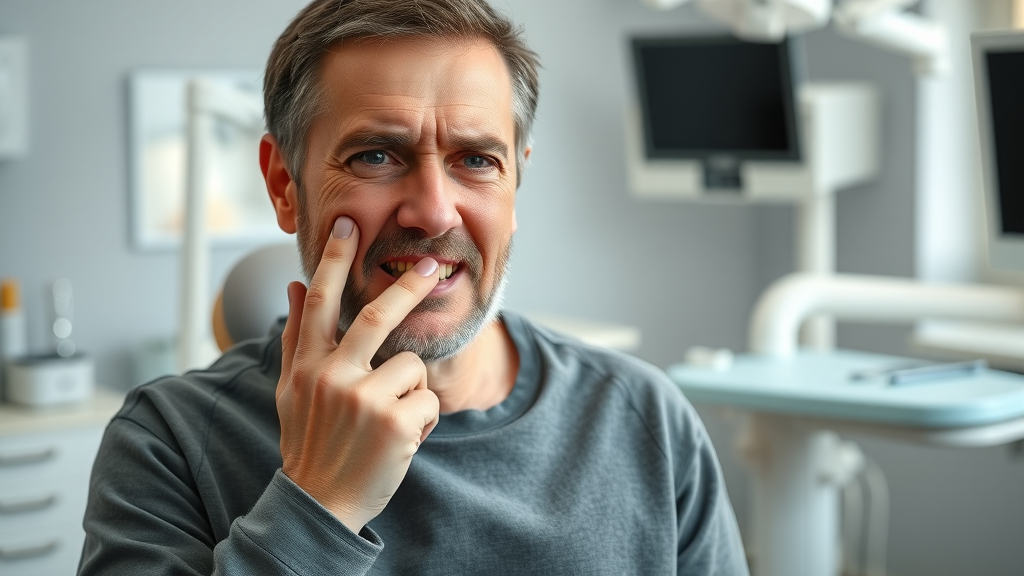
Key Signs and Symptoms of Dental Emergencies: When to Seek Emergency Dental Care
- Identifying dental pain that requires urgent attention
- Common dental emergencies and emergency dental symptoms
- When dental emergencies become life-threatening
Dental pain can be a signal of many underlying issues, but not all pain means you need emergency dental care. Persistent, severe pain that doesn’t go away with pain relievers or is accompanied by swelling, fever, or bleeding indicates a need for immediate attention. Common dental emergencies include toothaches that make it hard to eat or sleep, broken or chipped teeth (especially if there are sharp edges), knocked-out teeth, dental abscesses with pus or swelling, and injuries to the soft tissue of the mouth.
Sometimes, emergency dental symptoms can even be life-threatening. For example, if you experience swelling in the jaw or face that spreads rapidly or causes trouble swallowing or breathing, this suggests the infection may be affecting deeper tissues and could become a medical emergency. Uncontrolled bleeding after an oral injury, especially in combination with significant facial trauma, also warrants a visit to the emergency room rather than waiting for a dental office to open. Recognizing the red flags early and seeking prompt dental care can prevent complications and save teeth.
Among the most urgent dental emergencies is a knocked-out tooth, which requires immediate and specific first aid to maximize the chances of saving the tooth. For a detailed look at how to handle this situation, including step-by-step instructions and prevention tips, explore our comprehensive resource on what to do if you experience a knocked-out tooth .
What You’ll Discover in This Comprehensive Dental Emergency Guide
- Essential information about what is a dental emergency
- How to distinguish between common dental problems and true dental emergencies
- Steps you can take while waiting for emergency dental care
In this guide, you’ll learn more than just the textbook definition of a dental emergency—you’ll gain practical decision-making tools for everyday life. You’ll be able to spot the difference between a toothache you can monitor and a dental emergency that requires immediate treatment. We’ll reveal key prevention tips to protect your family from common dental emergencies and provide step-by-step instructions for what to do before you reach the emergency dental clinic. Plus, you’ll find first-hand stories, helpful tables, and answers to real questions people ask every day about caring for their teeth and gums during unexpected oral health crises.

Common Dental Emergencies and Their Causes
| Type of Dental Emergency | Symptoms | Causes |
|---|---|---|
| Toothache | Severe/persistent pain, sensitivity | Infection, decay, trauma |
| Knocked-out tooth | Missing tooth, bleeding, pain | Accident, sports injury |
| Chipped or broken teeth | Pain, visible crack, sharp edge | Biting hard objects, trauma |
| Abscessed tooth | Swelling, fever, pus | Bacterial infection |
| Lost filling/crown | Pain, visible gap | Wear, dental decay |
If you understand the most common dental emergencies and their causes, you’ll be better prepared to recognize them in yourself or your family. Toothaches are often the first sign of infection or decay, which, if left untreated, can escalate into much larger problems. Being aware of the risks and seeking dental treatment promptly helps preserve your oral health and reduces your chances of complications.
Many dental emergencies stem from unexpected injuries, such as biting hard foods or playing contact sports without a mouthguard. Regular dental checkups can help identify potential issues that might turn into emergencies down the road, such as weakened fillings or cracks in your teeth. Prevention, rapid recognition, and proper responses are critical components of effective emergency dental care.
How to Respond: First Aid Steps for Dental Emergencies
- Immediate actions for toothache, broken teeth, or dental pain
- When to visit the emergency room versus an emergency dental clinic
- Managing swelling, bleeding, and infection before professional help
When a dental emergency strikes, knowing what to do in those first few moments can make a significant difference. For a toothache, rinse your mouth with warm water and use a cold compress on your cheek to reduce swelling. For a knocked-out tooth, gently rinse the tooth with water (do not scrub), try to reinsert it into the socket, or keep it moist in milk or saliva, and get to the dentist as soon as possible—the sooner you act, the higher the chance of saving your tooth.
For dental trauma with significant soft tissue bleeding, apply pressure with clean gauze and seek emergency dental treatment—especially if bleeding won’t stop. If you suspect a broken jaw or facial bone fracture, immobilize the area and go directly to the emergency room. Any swelling or fever accompanied by dental pain points to an infection and should be treated seriously: use a cold compress and call your dental office or an emergency dental clinic right away. Avoid self-medicating with pain relievers for longer than a few hours without seeking professional dental care, as this can mask symptoms and delay critical treatment.
When Does Dental Pain Indicate a Dental Emergency?
Differentiating Routine Pain from Emergency Dental Pain
- Characteristics of severe dental pain that requires urgent care
- Signs that dental emergencies are developing
- Pain requiring emergency dental care or emergency room visit
Not all dental pain means you need to rush to the dentist, but certain characteristics make it clear you’re facing a dental emergency. Persistent, throbbing pain that wakes you at night, prevents normal eating, or is associated with fever or swelling should always prompt immediate action. Dental emergencies are more likely when pain rapidly escalates, is localized, and does not improve with over-the-counter pain relievers.
Emergency dental pain may also come on suddenly after trauma, such as a fall, blow to the face, or biting into something hard. If you notice pain with visible damage to the teeth or gums, or if your mouth feels “different” when you bite down, seek dental care right away. Pain involving the soft tissues of the mouth (tongue, cheeks, gums) combined with swelling or bleeding should be evaluated at an emergency dental clinic. Conversely, minor discomfort after eating something cold or sweet may be monitored until your next dental office visit. If you’re ever uncertain, contacting your dentist can guide you in determining if an emergency dental visit is necessary.
Emergency Dental Treatments: What to Expect
- Procedures performed during an emergency dental visit
- Role of x-rays and diagnostic tests in addressing dental emergencies
- The importance of timely intervention and follow-up dental care
During an emergency dental visit, your dental care professional will first review your medical and dental history before performing a focused examination. This often includes x-rays or other diagnostic tests to quickly determine the cause and extent of the problem. Common emergency dental treatments include pain management, repairing broken or knocked-out teeth, draining abscesses, and stopping severe oral bleeding. In many cases, the dentist will also prescribe antibiotics if there is evidence of infection.
Timely intervention is crucial; delaying care can lead to irreversible damage, tooth loss, or spread of infection to other parts of the body. Follow-up dental appointments are usually necessary to ensure complete healing and prevent long-term complications. Emergency dental clinics are designed to perform rapid triage, stabilization, and essential dental restoration procedures, so you can walk away knowing your oral health is on track.
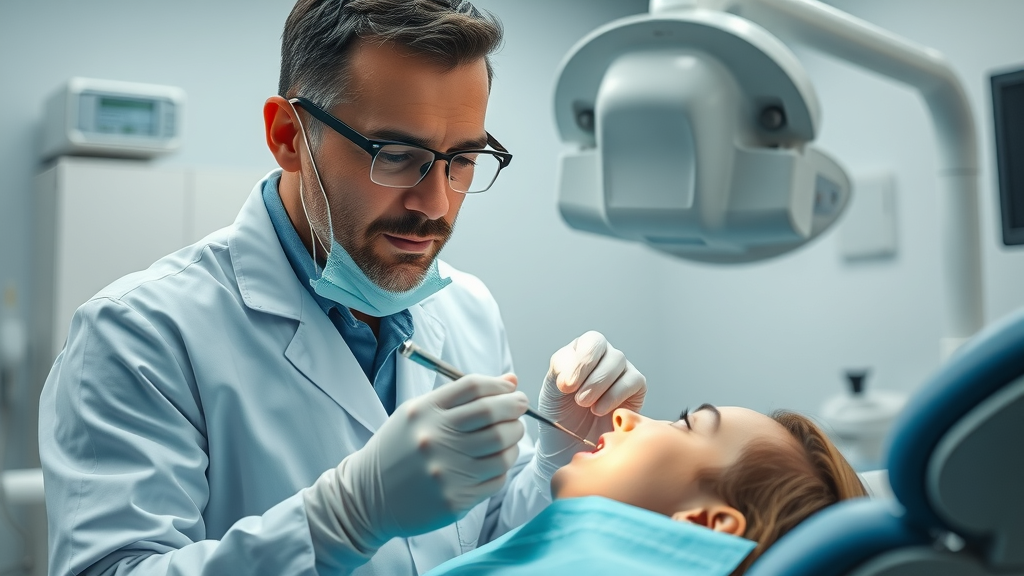
Choosing Emergency Dental Care vs. Emergency Room Visits
- Which dental emergencies require an emergency dental clinic
- Cases where a hospital emergency room is necessary
- How dental care professionals coordinate with hospitals for complex emergencies
One of the most common questions patients ask is whether they should go to an emergency dental clinic or visit the emergency room . Generally, issues like severe tooth pain, lost crowns or fillings, cracked or chipped teeth, and abscesses should be managed by your dentist or at an emergency dental clinic. Emergency dental professionals have the tools and expertise needed to address dental emergencies on the spot.
However, if you suffer from uncontrolled bleeding, facial fractures, deep lacerations, or swelling that compromises your airway or ability to breathe, you should head straight to the hospital emergency room. For complex oral and facial trauma, hospitals and dental care professionals often work together to coordinate advanced surgical care. In any situation where you’re unsure, call your dental office—they can direct you to the most appropriate form of emergency care based on your symptoms.
Myth vs. Fact: Dispelling Common Misconceptions about Dental Emergencies
- Misunderstandings around what is a dental emergency
- Examples of non-emergencies mistaken for urgent dental emergencies
- Risks of delaying care or self-medicating dental pain
There are lots of myths surrounding dental emergencies . Many people believe a cracked tooth that doesn’t hurt can be ignored, when in fact it may lead to infection or permanent tooth loss if left untreated. Conversely, not every form of dental pain means a middle-of-the-night trip to the ER. Tooth sensitivity after eating cold foods, for instance, could simply indicate a minor cavity or gum recession.
Another common mistake is trying to self-treat serious issues with home remedies or over-the-counter pain relievers. While it’s okay to use a cold compress or rinse your mouth with warm water temporarily, ignoring severe pain or infection symptoms can result in bigger, costlier problems. Don’t risk your oral health—if you suspect a true dental emergency, always seek professional dental care as soon as possible.

Prevention and Preparation: Reducing Your Risk of Dental Emergencies
- Daily dental care routines that reduce urgency scenarios
- Protecting teeth during sports and high-risk activities
- Emergency dental kits: Essentials for every family
While not all dental emergencies can be predicted or prevented, maintaining excellent oral hygiene and regular visits to your dental office make a major difference. Brush your teeth at least twice daily, floss every day, and avoid chewing hard objects like ice or hard candies. This daily routine supports strong teeth and gums and reduces the chance of surprise dental emergencies.
If you or your children play contact sports, always wear a mouthguard to protect your teeth from trauma. Keeping an emergency dental kit at home—with items like gauze, saline or warm water for rinsing, a small container for a knocked-out tooth, and your dental care provider’s contact information—can be invaluable in urgent situations. Being prepared not only minimizes stress during emergencies but ensures you can respond quickly and confidently to protect your oral health.
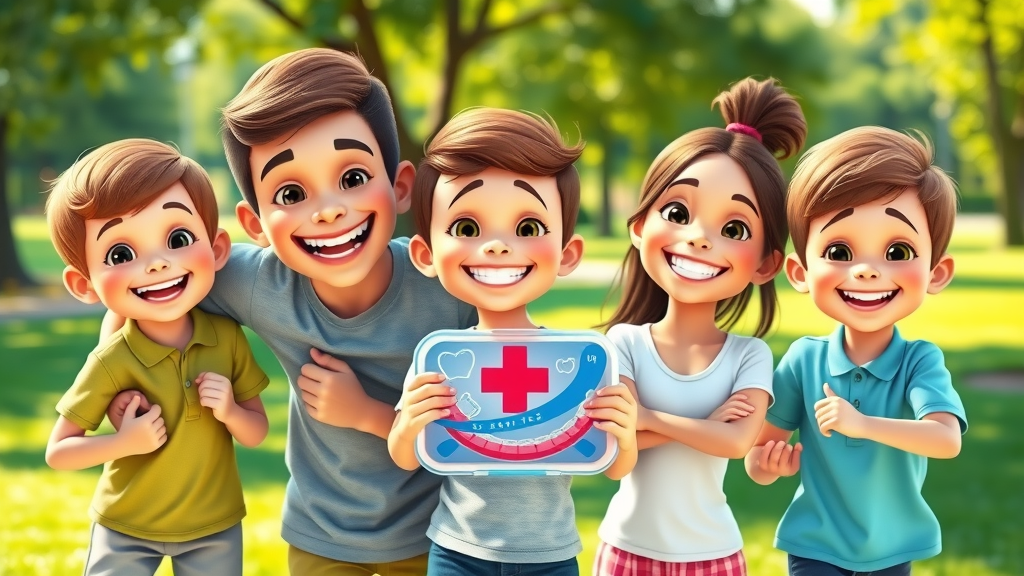
Real Stories: Timely Response to Dental Emergencies
"Quick thinking and prompt dental care saved my tooth after a cycling accident. Don’t wait—know when a dental emergency demands immediate action."
Time and again, patients share how immediate action during a dental emergency made all the difference. From preserving a knocked-out tooth by storing it in milk to stopping bleeding with gauze after a sports injury, quick, informed responses can mean the difference between keeping and losing a tooth. These real-world stories reinforce the importance of knowing what is a dental emergency—and acting fast.
Whether it’s calling your dental office at the first sign of swelling or seeking emergency dental care for sudden, severe pain, don’t second-guess yourself. Your oral health is worth protecting, and the right response now can spare you costly dental restoration or tooth loss down the road.
People Also Ask: What are examples of dental emergencies?
- Severe toothache and persistent pain
- Knocked-out, fractured, or luxated tooth
- Uncontrolled bleeding from gums or oral tissue
- Dental abscess with swelling and fever
- Lost filling, crown, or implant
Common examples of dental emergencies involve urgent scenarios like a severe toothache that refuses to subside or is accompanied by facial swelling, traumatic tooth loss from an accident or playing contact sports, persistent bleeding from the gums or soft tissues, and abscesses that cause pain and fever. Lost dental restorations—like fillings or crowns—can also become emergencies, especially if they lead to pain or exposed nerves. Quick care helps prevent further damage and restores oral function.
People Also Ask: What is counted as a dental emergency?
- Conditions requiring immediate dental care to prevent further complication or permanent tooth loss
- Symptoms involve pain, trauma, swelling, or infection impacting oral or systemic health
A dental emergency is counted as any situation where waiting could cause permanent tooth loss, severe pain, or serious infection. This includes uncontrolled bleeding, large chips or cracks that reach the tooth nerve, traumatic injuries with tooth displacement, or infections that produce swelling and fever. If you notice that your symptoms are rapidly worsening or interfering with daily life, seek emergency dental care immediately to avoid dangerous complications.
People Also Ask: What is classed as a dental emergency?
- Situations involving uncontrollable bleeding, severe dental pain, or facial swelling
- Any accident resulting in broken or avulsed teeth
Uncontrollable bleeding, severe pain that doesn’t respond to medication, facial swelling or difficulty breathing are all classified as dental emergencies . You should also visit your emergency dental clinic or hospital emergency room for any major trauma to the teeth, gums, or jaw—including broken or avulsed (knocked-out) teeth. If left untreated, these situations can quickly become life-threatening.
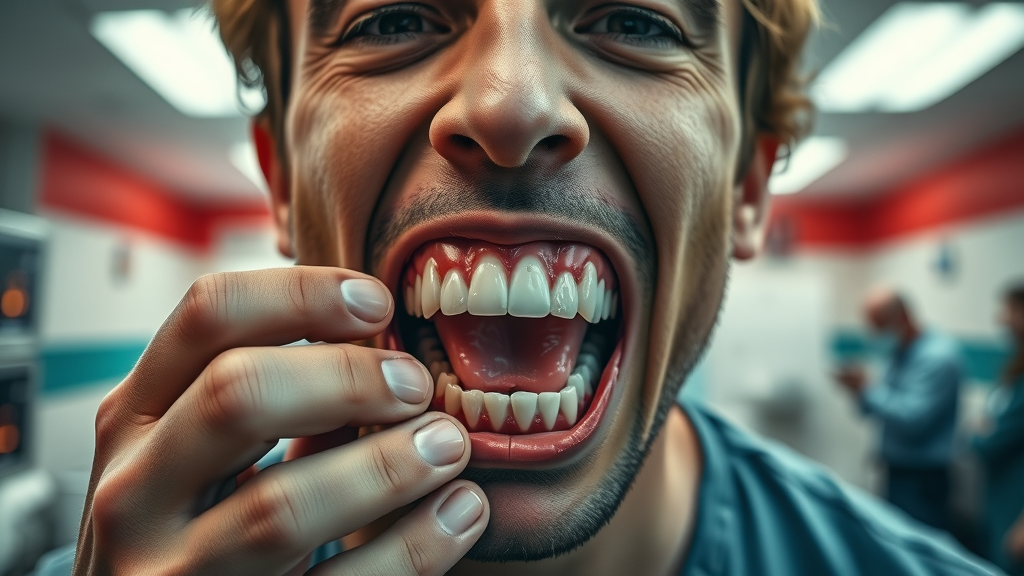
People Also Ask: What to expect during an emergency dental visit?
- Medical and dental history review by dental care professionals
- Assessment including examination, x-rays, and urgent treatment
- Pain management and care instructions for recovery
During your emergency dental visit, the dentist will start by reviewing your health and dental history to understand potential causes of your symptoms. A focused oral exam—often supported by x-rays or digital imaging—will follow to pinpoint the problem, such as hidden tooth decay, abscesses, or fractures. Emergency dental treatment can include procedures to relieve pain, repair damage, stop bleeding, or manage infections.
After resolving the immediate concern, you’ll get clear instructions for post-visit care, including how to manage discomfort, prevent infection, and when to schedule a follow-up appointment with your dentist. Emergency dental clinics understand the urgency and provide compassionate, swift care to put your oral health back on track.
FAQs on What is a Dental Emergency and Emergency Dental Care
-
What steps should I take if I have a dental emergency outside business hours?
If you experience a dental emergency at night or on the weekend, first try to manage pain and bleeding at home using gauze, a cold compress, or over-the-counter pain relievers. Search online for local emergency dental clinics, or call your regular dental office—they often have emergency numbers on their voicemail. For uncontrolled bleeding or life-threatening symptoms, go straight to the emergency room. -
Can I go directly to an emergency room for dental emergencies?
You may go to the emergency room for severe dental injuries, especially those involving major facial trauma, persistent bleeding, or swelling that affects breathing. However, most dental pain and urgent oral health issues are best managed by an emergency dental care provider or your dentist, who have specialized tools and training. -
Will dental insurance cover emergency dental care?
Many dental insurance plans include some coverage for emergency dental visits, especially if immediate treatment is necessary to relieve pain or prevent tooth loss. Be sure to review your plan details or call your insurance company before your visit. Keep in mind that certain procedures or after-hours visits may require additional payment. -
How can I avoid common dental emergencies?
Prevent most dental emergencies by maintaining good oral hygiene, wearing mouthguards during sports, not chewing hard objects, and scheduling regular checkups at your dental office. Acting promptly at the first sign of dental problems also prevents many emergencies from developing.
Actionable Advice: Next Steps If You Suspect a Dental Emergency
- Contact Johnstown Dental Care immediately at (470) 967-6046
- Prepare essential details about your symptoms for effective triage
- Seek prompt professional assistance to minimize discomfort and complications
If you think you’re experiencing a dental emergency, don’t wait—call the professionals at Johnstown Dental Care right away. Describe your symptoms clearly, include details about pain, swelling, bleeding, and how the issue started. Prompt action protects your teeth, reduces the risk of infection, and gets you back to comfort faster.
Quick Reference: Common Dental Emergencies and Appropriate First Response
| Dental Emergency | Immediate First Aid | When to Seek Care |
|---|---|---|
| Knocked-out Tooth | Rinse, keep moist, see dentist ASAP | Within one hour |
| Severe Toothache | Rinse mouth, cold compress | Immediately if pain persists |
| Broken Jaw | Immobilize, cold compress | Emergency room |
| Lost Filling | Temporary filling material | Within 24 hours |
Use this chart as your go-to reference when a dental emergency happens. Fast, appropriate action can restore your oral health and minimize lasting effects. Always consult your dentist after any urgent dental situation for the best long-term results.
Summary and Proactive Steps for Dental Emergency Preparation
- Consistent dental care lowers emergency risk
- Recognize key signs of dental emergencies
- Keep emergency dental contacts, including Johnstown Dental Care, accessible
Proactive oral health habits and a clear plan for emergencies will protect you and your family. Know the warning signs, act quickly, and keep the number for Johnstown Dental Care handy at all times.
Get Help with Dental Emergencies in Johnstown and Surrounding Areas
- For trusted emergency dental care, contact Johnstown Dental Care at 370 West Coshocton St. Johnstown, OH 43031, Phone: (470) 967-6046
- Proudly supporting Johnstown, New Albany, Granville, Alexandria, Pataskala, and nearby communities in Licking, Franklin, and Delaware counties
- Visit www.johnstowndentalcare.com to learn more or book an appointment
Take control of your oral health—don’t let uncertainty compromise your smile. For any questions or emergencies, trust Johnstown Dental Care to provide the urgent, compassionate care you need.
Engaging animated explainer on how to recognize and respond to dental emergencies, covering signs, symptoms, and first response steps. Visual examples include action shots of responding to knocked-out teeth, severe toothache, and facial swelling, with on-screen graphics highlighting key points.
Practical guide to managing a knocked-out tooth, including immediate rinsing, storage, and when to see a dentist. Action advice and graphics for all ages.
Explains the difference between emergencies handled by a dentist and those requiring a hospital emergency room. Learn which symptoms require immediate medical care and how dental professionals work with hospitals for complex trauma.
If you experience a dental emergency, don’t delay: Contact Johnstown Dental Care at (470) 967-6046 or visit them at 370 West Coshocton St. Johnstown, OH 43031. Your smile is worth protecting—trust the experts serving Johnstown and the entire Licking County community.
Understanding dental emergencies is just one part of maintaining lifelong oral health. If you’re looking to take a more proactive approach and reduce your risk of urgent dental issues, consider learning about effective strategies for gum health and disease prevention. Our in-depth guide on how to prevent periodontal disease offers practical tips and daily habits that can help you avoid many common dental emergencies before they start. By staying informed and adopting preventive care, you’ll not only protect your smile but also ensure peace of mind for you and your family. Take the next step toward a healthier mouth and discover how prevention can be your best defense.
Understanding what constitutes a dental emergency is crucial for timely and effective care. A dental emergency involves situations that require immediate attention to alleviate severe pain, stop ongoing tissue bleeding, or address infections that could be life-threatening. According to the American Dental Association, such emergencies include uncontrolled bleeding, cellulitis or diffuse soft tissue bacterial infections with intra-oral or extra-oral swelling that potentially compromise the patient’s airway, and trauma involving facial bones that may compromise the airway. ( delawarestatedentalsociety.org )
Common dental emergencies encompass severe toothaches, knocked-out teeth, broken or chipped teeth causing significant pain, dental abscesses with swelling and fever, and injuries to the soft tissues of the mouth. For instance, a knocked-out tooth requires prompt action: gently rinse the tooth without scrubbing, attempt to reinsert it into the socket if possible, or keep it moist in milk or saliva, and seek dental care immediately. ( deltadental.com )
It’s important to distinguish between urgent dental issues and those that can wait. While severe pain, uncontrolled bleeding, or swelling that affects breathing necessitate immediate attention, minor discomforts like small chips or mild tooth sensitivity can typically be addressed during regular dental office hours. ( deltadentalia.com )
In any dental emergency, contacting your dentist promptly is essential. If the situation is life-threatening, such as significant facial trauma or swelling that impedes breathing, seek immediate medical attention by calling 911 or visiting the nearest emergency room.
 Add Row
Add Row  Add
Add 


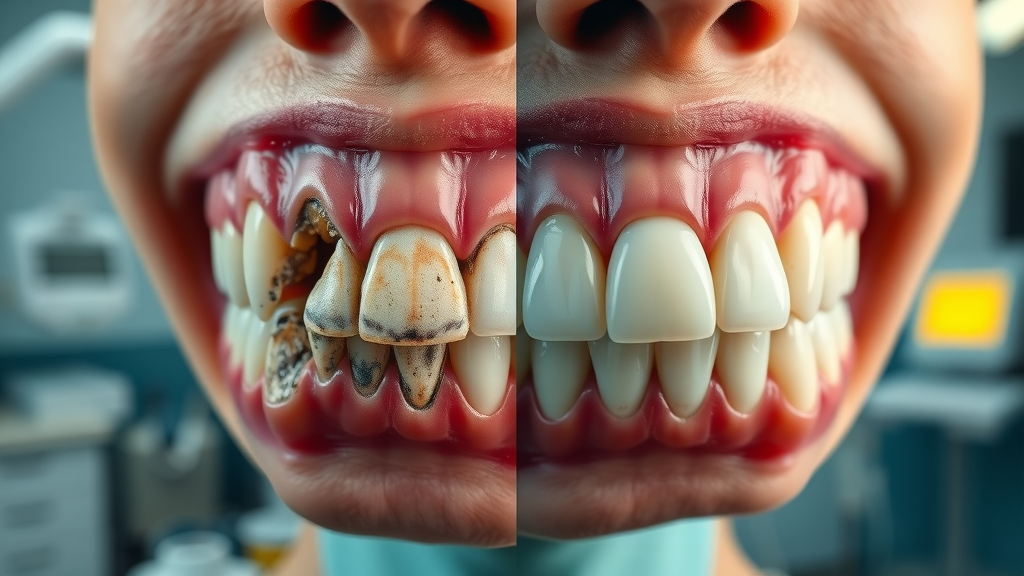

Write A Comment